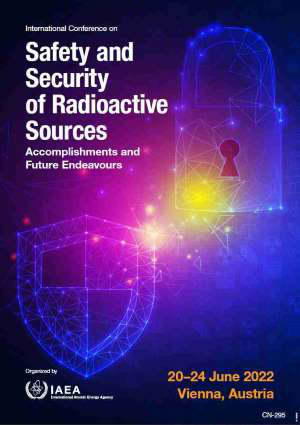Speaker
Description
The use of technology in the medical world has multiplied. One modality that uses a nuclear source is a teletherapy machine. The most widely used source of teletherapy today is cobalt-60. When the teletherapy machine does not meet the standards for use in external radiotherapy, it must be discarded, or approximately every 5 to 7 years of use must be replaced with a new source. Based on the regulation of the Nuclear Energy Regulatory Agency of Indonesia Number 6 of 2015, radioactive waste from teletherapy machines is classified as Category 1 Radioactive Sources or Spent High Activity Radioactive Sources (SHARS) according to the IAEA it has high activity. The cobalt-60 waste must be sent to the Center of Radioactive Waste Management Organization (PTLR) of Indonesia, which legally manages the radioactive waste in Indonesia. Currently, each of the spent radioactive waste sources of cobalt-60 in Indonesia uses a teletherapy head as a container. The head teletherapy as a container requires a larger storage space than the existing storage area in PTLR. Therefore, it is necessary to design a container transportation design to design a new transport container. It is crucial to do an accident analysis first. One of the well-known analytical methods is Fault Tree Analysis (FTA).
In this study, an analysis of the causes of accidents that may occur while transferring the spent radioactive source from the teletherapy cobalt-60 machine into the transport container was carried out. The research was conducted first by determining two different scenarios. These two different scenarios were conducted to compare each other. The first scenario was by removing teletherapy cobalt-60 source waste with the process that already exists. The second scenario was removing teletherapy cobalt-60 source waste with a new design based on the researcher’s opinion. The analysis was carried out using the Fault Tree Analysis (FTA) method. The method used in this study was to determine undesired events (top events) that could cause radiation exposure over the limits for both workers and the environment. The next was to determine intermediate events connected with logic gates and then proceed to obtain primary events. All events that had been obtained were then graphically described to form a fault tree using the software. The next step was to determine the failure rate of each primary event based on published generic data. It was followed by determining the minimum cut set of every top event, sequence of events, probability, and the most significant factors that cause accidents in transferring spent radioactive source from teletherapy machine to transport container.
The research shows that two undesired events were the same for each scenario. The first one was failing the source drawer, and the second one was container leakage. The principal causes for the source drawer to occur were because the container was not correctly installed on the teletherapy head, the t-rod used was not appropriate, and human error. The main causes of container leakage were due to container body malfunction and container door malfunction. In addition, it was also expected that the probability of causing an accident from transferring the cobalt-60 radioactive waste from the teletherapy machine into the transport container was still below 5% and could still meet the safety standards
| Country OR Intl. Organization | Indonesia |
|---|

